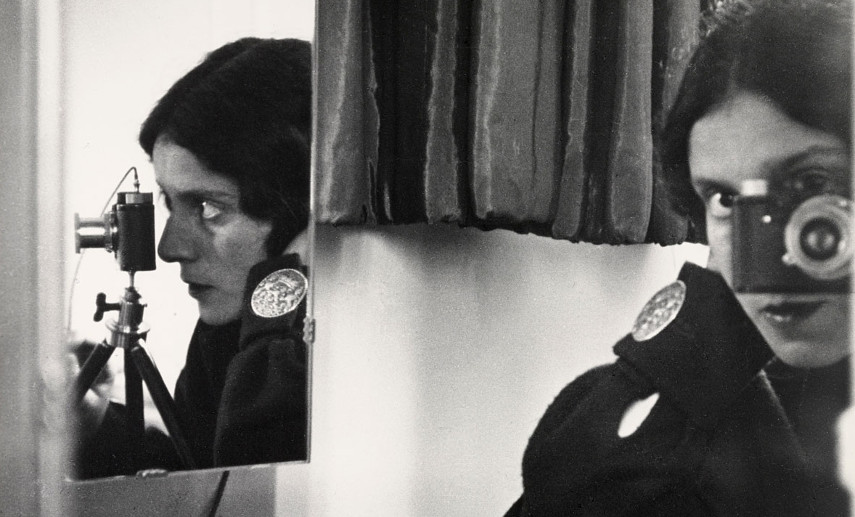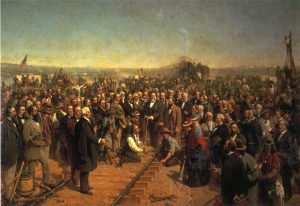At the onset of World War I, few keen-eyed political spectators were surprised or concerned for war. The tensions between European powers had been building for quite some time. Very few, however, thought that the war would be such a bloody and atrocious war. By the end of the global affair, Europe was in ruins, particularly the Germans, who suffered the consequences of massive reparations and massive inflation.1 Disillusionment among the common people was high even by the middle of the war, and women were making a stand for voting rights while they united with pacifists against the war.2 Hannah Hoch was one woman who expressed her desire for equality, and she did so by radical expression through art. The aftermath of World War I was especially a time when art was more than a reflection of societal changes; art served as a plea for change, as a tool for political expression, and as a critique of society and culture. The rapid explosion of political art at the dawn of the twentieth century was felt across the western hemisphere through the works of Diego Rivera and Frida Kahlo, through Pablo Picasso and Wassily Kandinsky, and for a short period of time, through the Dada Movement.
The Dada Movement was a trend in art, literature, and music beginning shortly before the end of World War I. While Dada had no official set of principals by which it operated, the main characteristic of Dada was revolt against the Bourgeois, against tradition, against restrictive government, and against the commonly accepted restrictions of what was or was not art. Dada often encouraged and espoused left-wing ideology, particularly communism and anarchism. The movement came to fruition in Zurich, Switzerland at the Cabaret Voltaire. Hugo Ball, the founder of Cabaret Voltaire, named it after the French philosopher Voltaire who praised rational and scientific thought and condemned irrational superstition. The salon quickly emerged as an epicenter for artists in exile; the emergence of a movement opposed to the bourgeoisie, the status-quo, and what might be called today “The Man,” “big brother,” or “the system,” flowed naturally from a confluence of radical thinkers at the Cabaret Voltaire.3 This movement, though not completely united, emerged as a trend in Berlin around 1916 during the war, particularly out of the leadership of the young woman Hannah Hoch and her lover Raoul Hausmann. Hausmann introduced Hoch to avant-garde art and to the Dada movement in Zurich shortly after her return to Berlin in 1916. Hoch had been serving as a member of the Red Cross throughout 1914, taking a short break from her time at university, which had begun in 1912. Hoch and Hausmann became consumed by the Dada movement, innovating and perfecting a new artistic medium of their own, the photo-montage. Hausmann also created Dada poetry, which, according to the National Gallery of Art, was supposed to offer, “both a metaphor for the destruction caused by war and a commentary on the deceitfulness of language.”4 Here is a video recording of his poem, Fmsbw.
https://www.youtube.com/watch?v=y5vxwhibzfw
Although it may not seem significant by today’s standards, the photo-montage broke the boundaries of classical art. Rather than paint on canvas, Hoch and Hausmann manipulated pieces of photographs to create a new piece of art. Although Hausmann and Hoch were romantic partners and associates in art, Hoch stood out on her own.5 In 1919, one of Hoch’s most famous works was published. It was called “Cut With a Kitchen Knife: Dada Through the Last Weimar Beer-Belly Cultural Epoch of Germany,” and it was featured in 1919 in the First Berlin Dada Exhibition. Viewed closely, a feminist agenda is clear in the photo-montage. At the bottom right corner of the artwork, Hoch placed a cutout of her face in place of her signature; immediately to the right of that cutout is a map of Europe highlighting all of the nation-states that acknowledged women’s voting rights at that time. But Hoch’s artwork addressed more than feminism. The same painting depicts a sort of spectrum of political ideology, with followers of the Dada Movement on the bottom, communist theorists and social scientists in the middle, and German political authorities like Kaiser Wilhelm II at the top right. Near the head of Wilhelm is a script that reads “die anti dada istiche,” or the “the one who is anti-Dada.” Hoch’s work was also promoting the Dadaist movement as a political movement, as an anarchist movement still farther left than communism, and as opposed to the machinery of the German regime. Hoch’s art was displayed again in 1920 at the First International Dada-Fair.

Two years later, Hoch and Hausmann parted ways and Hoch became romantically involved with Dutch writer, Til Burgman, after meeting her on a trip in Italy. Hoch never publicized her lesbian affair. The couple lived at The Hague for three years, and for another six in Berlin until their split in 1938. Although Hoch was called a “cultural Bolshevik” by a Nazi commentator in 1937, and her art was declared “degenerate art” by the Nazi party, Hoch lived and worked in Berlin throughout World War II, and until her death in 1978. Hoch’s work received little historical attention for some time due to her refusal to allow researchers to view her papers during her lifetime. However, upon the sale of her estate after her death, historians have begun to illuminate the story of this fascinating woman.6
- Salem Press Encyclopedia, 2017, s.v. “World War I,” by Robert F. Gorman. ↵
- Helen McCarthy, “Pacifism and Feminism in the Great War,” History Today 65, no. 4 (April 2015): 4–5. ↵
- Carmen Stonge, “Dada Movement Emerges at the Cabaret Voltaire,” Great Events from History: The Twentieth Century (Online Edition) (Salem Press, 2013). ↵
- “DADA – Techniques – Sound,” https://www.nga.gov/exhibitions/2006/dada/techniques/sound.shtm. ↵
- “Höch, Hannah (1889 – 1978),” in Who’s Who in Gay and Lesbian History, edited by Robert Aldrich, and Garry Wotherspoon (New York: Routledge, 2002). ↵
- “Höch, Hannah (1889 – 1978),” in Who’s Who in Gay and Lesbian History, edited by Robert Aldrich, and Garry Wotherspoon (New York: Routledge, 2002); C. Townsend, “Exhibitions: Hannah Hoch,” Art Monthly no. 374 (2014): 20. ↵



41 comments
Brianda Gomez
After World War 1, Hannah Hoch and The Dada Movement, are interesting topics to learn about. I enjoyed reading this article because it adds to the group of individuals that are fighting for equality. Like many other groups and the Dada movement was against restrictive government, feminism, and the depicted a sort of spectrum of political ideology. It is amazing that these women would do the “talking through their artwork.
Robert Rees
It’s always interesting to read about how different art and political movements began. The way this article is structured, first introducing us to Dada, then how Hoch became involved in the movement, and finally Hoch’s rise to prominence and later life, really made me feel as if I knew Hoch. Overall found this article very informative and interesting, however I wish this article included how Hoch continued to operate in Berlin during the reign of the Nazi Party.
Matthew Rios
It’s in time’s like this I’d rather see anarcho-communist values be portrayed in art, than through violence as we’ve seen in recent events and most likely will see in future Antifa counter protest events as well. With that, some very far left ideology has seemingly plagued the nation as of recent weeks and it’s unfortunate. I’d much rather see the Dadas expression of dissent than what we’ve been seeing in the fringe far left in the U.S.
Samman Tyata
Honestly, I had no any idea about Hannah Hoch before reading this article. This article is very well managed and was really informative. It’s kind of amazing that the Dada Movement was a trend in art, literature, and music. This article provides an effective explanation about the Dada Movement and how it addressed certain issues shortly after the end of World War 1. It’s really inspiring to read about a strong-willed woman like her. To sum it up, it was a good read.
Joel Gracia
This article introduced me to a completely new topic. I had never heard of the Dada movement and only briefly heard Hoch’s name associated with art. The movement is still somewhat blurry to me but for the length of the article I was provided with a very good idea of what it is. I find art to be the most beautiful form of war that someone can wage on an opponent, not to physically damage them but to damage moral and support of unjust movements, and Hoch did a great job of doing so in a peaceful way.
Amber Aragon Alvarado
I really enjoyed reading about the Dada movement discussed. I learned a lot about Hoch. The article taught me a lot, especially since a lot of people do not know of the work that she did. Along with that her information and name have still yet to be discussed or talked about in classrooms. I had no idea who she was yet she did so much. Overall the articular gave detailed information that I would have never heard of in school. If Hoch’s work was to become more known it would help with feminine issues that are being faced today by many female individuals across the world.
Joshua Breard
Hannah Hoch was a very selfless women who would lead a movement that would go under the radar in history. In all honesty I was not aware of who Hoch was or the Dada movement till I read this article but it that is also the reason why I find this article to be important. It shines a light on a movement that would tackle feminine issues women faced. Thank you for this well thought out article giving information on Hoch but I would have liked more information on the Dada movement. Overall great article!
Sam Vandenbrink
“While Dada had no official set of principals by which it operated, the main characteristic of Dada was revolt against the Bourgeois” When reading about this part of the article one thinks about how much it means to loose tradition, and respective government. It can mean allot to a society and group of people. Very interesting article, wouldn’t have ever thought of the topic, good choice!
Andrea Chavez
Frankly I had never heard of neither the Dada movement or of Hoch. I really think there should be a clearer explanation of how the Dada movement works. Although the information on Hoch is very clear and well informed. I do enjoy various forms of art. But I think on this one I kind of see it in the same way that the Nazi Party does. Yet it is still art and I do respect that.
Clarissa Bustamante
Before this article I had no idea of Hannah Hoch or the Dada Movement. As I saw the pictures that were added to this article I thought it was just a bunch of newspaper articles put together and I didn’t really think it would have a deeper meaning to it. If Hoch’s work was more known then I think it would be a huge help with feminine issues today.